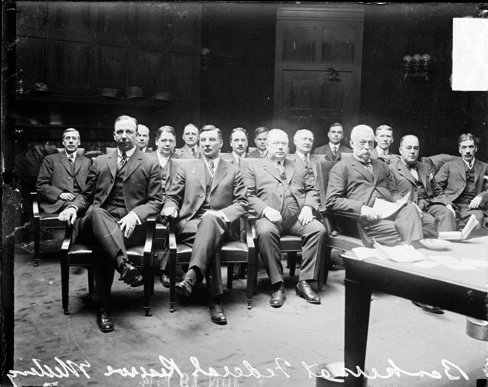A central admission

The United States Federal Reserve was created by bankers, for bankers. The most prominent man in their lobbying effort later acknowledged a fundamental deceit.
In 1911, associates of JP Morgan Chase and John D. Rockefeller organized The National Citizen's League for a Sound Banking System. This organization was joined by many American bankers from large national banks (there was less support from smaller state banks). Their aim was to establish a central bank in the United States.
No, these bankers were not dissuaded by the irony of asking a decentralized federal government to create a central bank. They addressed it boldly, with doublespeak. The League's "Speeches and promotional literature stressed decentralization" despite the obvious impossibility. The first of the League's seven goals was "Co-operation, not dominant centralization, of all banks". But many years later this was contradicted by the League's most prominent member.
Laurence Laughlin was the founder and chairman of the League. He drafted the Federal Reserve Act that was passed by Congress in 1913. Twenty years later, he gave a slightly different version of the League's seven goals. The biggest difference was the word "with" instead of "not," so the League's first goal was "Coöperation, with dominant centralization, of all banks". It is a complete reversal in meaning that admits exactly what Americans feared about it.
It is very likely Laughlin wrote the original draft of the League's seven goals. If so, the League revised it to say "not dominant centralization" before publication. (After all, to admit a goal of "dominant centralization" would have been suicidal to the cause.) In that case, Laughlin was probably giving his original draft. In the other case, Laughlin modified the League's official language for his book. Either case is damning.
It's not clear whether Laughlin meant to publish his version. He was old when he wrote his book – in his early 80s – and died the same year it was published. He could have made a mistake. Or he could have wanted to include it for posterity, believing that the time for skepticism had passed.
What is clear: Congress quickly buckled under a deluge of misrepresentation. Laughlin and the bankers created their lobby in 1911. Congress passed his Federal Reserve Act two years later.
Laughlin provides only one historical example of the false pretenses under which the Federal Reserve was established by bankers. Bank-only bailouts and inequality-boosting quantitative easing are modern examples of its crony nature. Shouldn't we at least regard it with skepticism? And could you blame someone for regarding it with disdain?
